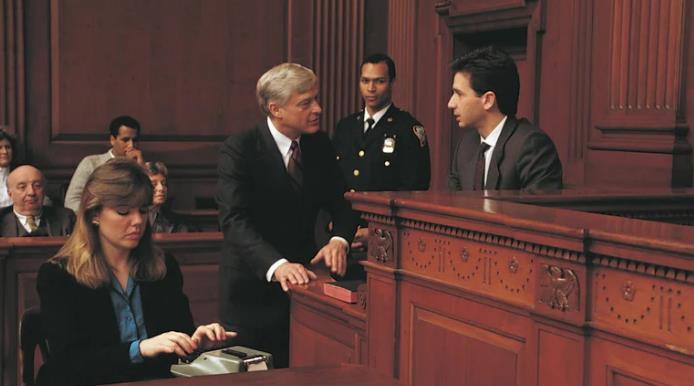When it comes to appearing in court, it is crucial to dress appropriately as it can greatly impact the way you are perceived by judges and juries. Making a positive first impression is essential, and your attire plays a significant role in achieving this. This article will provide you with helpful tips on how to dress for court for both men and women, ensuring that you present yourself professionally and respectfully during any legal proceedings.
Key Takeaways
- Proper courtroom attire is important for making a positive impression in court
- Dressing appropriately shows respect for the court system and the seriousness of the proceedings
- Men should opt for suits in neutral colors, while women can choose tailored dresses or pantsuits
- Accessories should be minimal and grooming should be attended to
- Choose humble and serious colors like navy, white, or beige for court appearances
Why Dressing for Court Is Important?
The way you dress for court can have a significant impact on how you are viewed by the judge and jury. First impressions are crucial, and your attire is a key factor in forming those initial perceptions. By dressing appropriately, you show that you take the proceedings seriously and that you respect the court system.
On the other hand, dressing inappropriately or provocatively can lead to negative judgments and affect the outcome of your case. Taking the time to dress professionally for court is a simple yet effective way to make a positive impression and increase your chances of a favorable outcome.
How to Dress for Court?

When appearing in court, it is important to adhere to a general dress code to show respect for the seriousness of the proceedings and to present a professional image. Whether you are a man or a woman, dressing conservatively is key. Here are some guidelines to follow:
For Men
- Opt for a suit in neutral colors such as navy blue, gray, or white.
- Pair your suit with a collared shirt.
- Choose dark leather shoes.
For Women
- Choose a tailored dress, skirt and blouse, or a pantsuit.
- Opt for subdued hues.
- Make sure your clothing is not revealing or too tight.
Avoid flashy jewelry, hats, sneakers, and jeans, as these can be seen as disrespectful or unprofessional in a courtroom setting. By dressing appropriately, you demonstrate your understanding of the court’s expectations and convey a professional demeanor.
Attention to Detail: Grooming and Accessories
When preparing for a court appearance, it’s important to pay attention to more than just your attire. Grooming and accessories play a crucial role in creating a polished and professional look. Here are some tips to help you make the right impression:
Grooming Guidelines
- Gentlemen, ensure your facial hair is well-groomed. Trim and style it neatly to maintain a clean and professional appearance.
- Ladies, opt for minimal makeup that enhances your natural features, avoiding bold colors or heavy applications.
- Both men and women should have neatly trimmed nails and avoid distracting nail colors. Stick to conservative shades for a more professional look.
- It’s important to remove any visible tattoos and piercings, except for conservative earrings which are generally acceptable in a courtroom setting.
Choosing Appropriate Accessories
- Opt for accessories that are simple and understated. Avoid anything flashy or distracting.
- For men, a classic watch and a conservative tie can add a touch of professionalism to your attire.
- Women should choose accessories that complement their outfit without overpowering it. A simple necklace or stud earrings can be a tasteful addition.
“Paying attention to grooming and accessories shows the court that you respect the proceedings and take your appearance seriously.”
By taking care of these grooming and accessory details, you enhance your overall courtroom look and present yourself as a professional individual. Remember, dressing appropriately for court is not just about the clothes you wear but also about the complete package you present. Your attention to detail will leave a positive and lasting impression on judges, juries, and everyone else in the courtroom.
Color Considerations for Court

When preparing to appear in court, it’s important to consider the colors you choose for your attire. Colors can have a psychological impact on how you are perceived, so it’s crucial to make thoughtful choices that convey professionalism, respect, and seriousness. Here are some color guidelines to keep in mind when selecting your court outfit:
1. Avoid Black
While black is often associated with formality, it can come across as authoritative or even guilty in a courtroom setting. It’s best to steer clear of all-black ensembles to avoid any negative perceptions.
2. Opt for Humble and Serious Colors
Instead of black, opt for colors that convey humility and seriousness. Subdued hues such as navy blue, white, and beige are excellent choices for courtroom attire. These colors project a professional image without overpowering the room.
3. Steer Clear of Bright and Provocative Colors
Colors that are bright, vibrant, or provocative should be avoided when dressing for court. Neon green, yellow, and red, for example, can be seen as disrespectful or deliberately insulting to the court. It’s essential to choose colors that will not distract or create unnecessary attention.
4. Stick to Core Business-Suitable Colors
To maintain a professional appearance, it’s always a safe option to choose core business-suitable suit colors like gray, white, and navy blue. These colors are timeless and appropriate for a courtroom setting, ensuring you present yourself in a respectful and responsible manner.
5. Consider the Funeral Test
If you’re unsure whether a color is appropriate for court, ask yourself if you would wear it to a funeral. If the answer is yes, then it is likely a suitable choice for the courtroom environment.
By considering these color guidelines for your court outfit, you can ensure that you present yourself in a professional and respectful manner that aligns with the expectations of the legal proceedings.
Dos and Don’ts for Dressing for Court

To ensure you dress appropriately for court, it is important to follow some general dos and don’ts. These guidelines will help you present a professional and respectful image in court:
Do’s for Dressing for Court
- Color-coordinate your outfits: Choose neutral colors like navy blue, gray, or white for a conservative and professional look.
- Wear dark leather shoes: Opt for polished, closed-toe shoes that complement your attire.
- Groom and trim your hair: Make sure your hair is neat and well-maintained to enhance your overall appearance.
- Dress conservatively: Opt for clothing that fully covers your body and portrays a serious and respectful demeanor.
Don’ts for Dressing for Court
- Avoid flashy jewelry: Keep your accessories minimal and understated to avoid distraction.
- Avoid hats: Remove any headwear when entering the courtroom.
- Avoid sneakers: Opt for formal shoes instead of casual footwear.
- Avoid overdressing or wearing clothing that is too tight, revealing, or overly short: Dress appropriately without drawing unnecessary attention to your attire.
- Avoid showing tattoos or keeping visible piercings: Except for conservative earrings, it’s best to cover tattoos and remove any visible piercings for a more professional look.
Conclusion
Dressing appropriately for court is of utmost importance as it not only makes a positive first impression but also demonstrates respect for the legal proceedings. By following the guidelines for court attire, grooming, and color coordination, you can present yourself professionally and increase your chances of a favorable outcome. Remember, dressing professionally for court showcases your seriousness and maturity, indicating your value for the court system and your readiness to participate responsibly. Taking the time to dress appropriately sets the stage for a successful courtroom experience.

